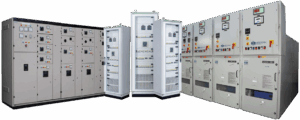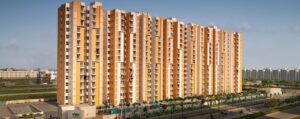Introduction
When it comes to choosing a roofing material for your home or business, there’s no shortage of options—shingles, tiles, slate, and more. However, one roofing solution stands out for its strength, efficiency, and longevity: metal roofing. Once reserved mainly for commercial buildings, metal roofs have become a popular choice for residential properties as well, thanks to modern designs, color choices, and advanced coatings.
What Is Metal Roofing?
Metal roofing refers to a roof made from metal pieces or tiles characterized by high resistance, impermeability, and longevity. It can be made from a variety of materials including:
- Aluminum
- Steel (galvanized, galvalume)
- Copper
- Zinc
- Tin (less common today)
Metal roofs come in various styles and profiles such as standing seam panels, corrugated metal panels, and metal shingles that can mimic the appearance of wood, slate, or clay tiles.
The Durability of Metal Roofing
-
Long Lifespan
One of the biggest selling points of metal roofing is its durability. While asphalt shingles typically last 15–25 years, a well-installed metal roof can last 40 to 70 years, depending on the material and maintenance.
-
Weather Resistance
Metal roofs are extremely resistant to harsh weather conditions. They can withstand:
- Heavy rain and snow
- High winds (up to 140 mph or more)
- Hail and debris impact
- Fire (most metal roofs are Class A fire-rated)
Because metal panels interlock and are secured tightly to the structure, they’re less likely to be lifted or damaged by wind or storms.
-
Pest and Rot Resistance
Unlike wood or asphalt shingles, metal does not attract insects, mold, or mildew. It won’t rot, warp, or crack over time, making it an ideal roofing solution in areas prone to humidity or termites.
Energy Efficiency Benefits
-
Reflectivity and Cool Roofing
Metal roofs reflect solar radiant heat, reducing cooling costs by 10–25%. Light-colored metal roofs or those with cool roof coatings are particularly effective at minimizing heat absorption, keeping indoor temperatures cooler during hot months.
-
Thermal Emittance
High thermal emittance means that metal roofs release absorbed heat faster than traditional materials. This contributes to lower cooling loads and helps maintain a more stable indoor environment.
-
Compatibility with Solar Panels
Metal roofs are an excellent platform for solar panel installation. Their strength and durability mean they won’t require replacement during the life of your solar system, unlike traditional roofs which might need repairs or replacement mid-way.
Types of Metal Roofing Materials
-
Steel
- The most common and cost-effective option
- Comes in different grades and coatings (galvanized or galvalume)
- Very strong and impact-resistant
-
Aluminum
- Lightweight and corrosion-resistant
- Great for coastal climates due to resistance to salt
- Slightly more expensive than steel
-
Copper
- Elegant appearance with natural patina over time
- Extremely long lifespan (can exceed 100 years)
- Higher cost but unmatched aesthetic and durability
-
Zinc
- Self-healing properties (scratches and dings fade)
- Long lifespan with minimal maintenance
- Eco-friendly and fully recyclable
Styles and Design Options
Gone are the days when metal roofs were only available in plain, industrial styles. Today, homeowners can choose from:
- Standing Seam: Clean, modern lines with vertical panels and hidden fasteners
- Metal Shingles: Mimic traditional shingles or slate, but with added strength
- Corrugated Panels: Popular in barns and rustic architecture
- Metal Tiles or Shakes: Resemble clay or wood shakes
Metal roofs come in various colors, finishes, and textures. Many coatings are also designed to reflect UV rays and resist fading, ensuring your roof looks great for decades.
Environmental Benefits
Metal roofing is one of the most environmentally friendly roofing options available:
- Recyclable Materials: Most metal roofs are made from recycled materials and can be fully recycled at the end of their life.
- Energy Savings: By lowering your cooling demands, metal roofs reduce your household’s energy consumption and carbon footprint.
- Low Maintenance: Fewer repairs and replacements over time reduce waste and resource usage.
Installation and Maintenance
Installation
Metal roofing installation requires skilled labor and should always be done by professionals. Proper underlayment, flashing, and fastener systems are critical to prevent leaks and ensure performance.
While the upfront cost is higher than asphalt shingles, the longer lifespan and lower maintenance needs make it a more cost-effective solution over time.
Maintenance
- Inspect periodically for debris or damage from heavy storms
- Keep gutters clean to prevent water buildup
- Check for scratches or coating wear and touch up if needed
- Remove branches or leaves that could trap moisture
Overall, metal roofs require less maintenance than other materials.
Cost Considerations
On average, metal roofing costs between $8 to $16 per square foot, depending on the material and style. Though this is higher than asphalt shingles ($3 to $6 per sq. ft.), the lower lifetime cost makes it a smart investment.
Factors that affect cost:
- Type of metal used
- Roof pitch and complexity
- Geographic location
- Underlayment and insulation
Some homeowners may also qualify for tax credits or insurance discounts when they install a metal roof due to its energy efficiency and fire resistance.
Conclusion
Metal roofing is a powerhouse solution for homeowners and property managers seeking durability, energy efficiency, and long-term value. Whether you’re building a new home or replacing an aging roof, metal roofing provides unmatched protection against the elements while enhancing the aesthetic and environmental performance of your property.






